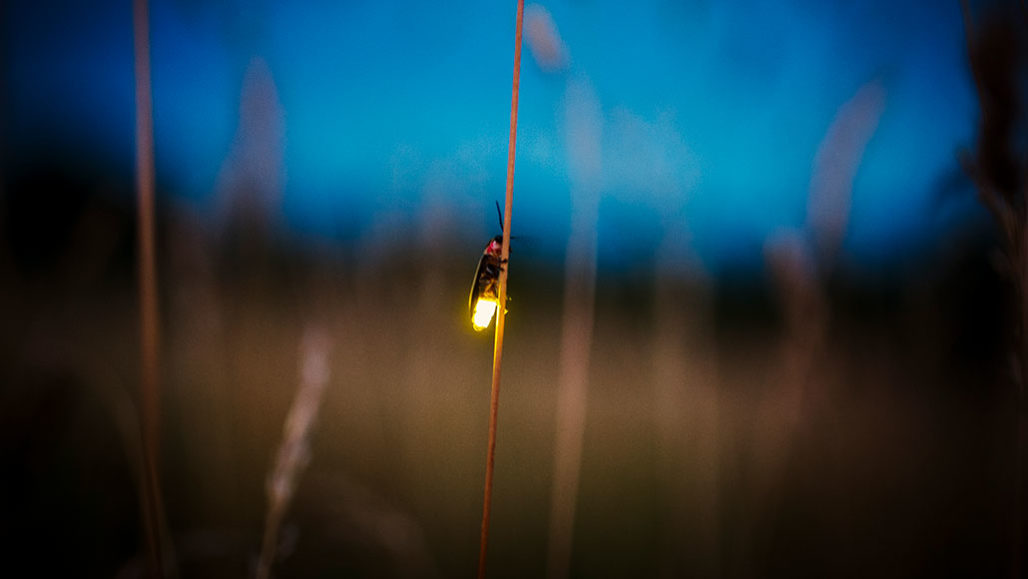algae: Single-celled organisms, once considered plants (they aren’t). As aquatic organisms, they grow in water. Like green plants, they depend on sunlight to make their food.
bacteria: (singular: bacterium) Single-celled organisms. These dwell nearly everywhere on Earth, from the bottom of the sea to inside other living organisms (such as plants and animals). Bacteria are one of the three domains of life on Earth.
behavior: The way something, often a person or other organism, acts towards others, or conducts itself.
bioluminescence: The light emitted by certain animals — such as fireflies, squid and deep-sea fishes — and by some shallow-water algae.
bug: The slang term for an insect. Sometimes it’s even used to refer to a germ. (in computing) Slang term for a glitch in computer code, the instructions that direct the operations of a computer.
chemical: A substance formed from two or more atoms that unite (bond) in a fixed proportion and structure. For example, water is a chemical made when two hydrogen atoms bond to one oxygen atom. Its chemical formula is H2O. Chemical also can be an adjective to describe properties of materials that are the result of various reactions between different compounds.
chemical reaction: A process that involves the rearrangement of the molecules or structure of a substance, as opposed to a change in physical form (as from a solid to a gas).
firefly: An insect in the family Lampyridae. Also called lightning bugs, fireflies are not flies at all, but beetles. They are known for their beautiful nighttime flashes of light, called bioluminescence. There are over 2,000 species of firefly around the world.
glass: A hard, brittle substance made from silica, a mineral found in sand. Glass usually is transparent and fairly inert (chemically nonreactive). Aquatic organisms called diatoms build their shells of it.
insect: A type of arthropod that as an adult will have six segmented legs and three body parts: a head, thorax and abdomen. There are hundreds of thousands of insects, which include bees, beetles, flies and moths.
luciferin: A light-emitting chemical found in bioluminescent organisms. Different species have different types of luciferin. When luciferin is combined with oxygen, it produces a glow.
luminescence: The glow produced by a chemical process at relatively low temperatures. Some animals are able to luminesce, based on chemical reactions ins ide their bodies.
mucus: A slimy substance produced in the lungs, nose, digestive system and other parts of the body to protect against infection. Mucus is made mainly of water but also includes salt and proteins such as mucins. Some animals use mucus for other purposes, such as to move across the ground or to defend themselves against predators.
organism: Any living thing, from elephants and plants to bacteria and other types of single-celled life.
oxygen: A gas that makes up about 21 percent of Earth's atmosphere. All animals and many microorganisms need oxygen to fuel their growth (and metabolism).
pigment: A material, like the natural colorings in skin, that alter the light reflected off of an object or transmitted through it. The overall color of a pigment typically depends on which wavelengths of visible light it absorbs and which ones it reflects. For example, a red pigment tends to reflect red wavelengths of light very well and typically absorbs other colors. Pigment also is the term for chemicals that manufacturers use to tint paint.
predator: (adjective: predatory) A creature that preys on other animals for most or all of its food.
protein: A compound made from one or more long chains of amino acids. Proteins are an essential part of all living organisms. They form the basis of living cells, muscle and tissues; they also do the work inside of cells. Among the better-known, stand-alone proteins are the hemoglobin (in blood) and the antibodies (also in blood) that attempt to fight infections. Medicines frequently work by latching onto proteins.
sea: An ocean (or region that is part of an ocean). Unlike lakes and streams, seawater — or ocean water — is salty.
species: A group of similar organisms capable of producing offspring that can survive and reproduce.
squid: A member of the cephalopod family (which also contains octopuses and cuttlefish). These predatory animals, which are not fish, contain eight arms, no bones, two tentacles that catch food and a defined head. The animal breathes through gills. It swims by expelling jets of water from beneath its head and then waving finlike tissue that is part of its mantle, a muscular organ. Like an octopus, it may mask its presence by releasing a cloud of “ink.”

